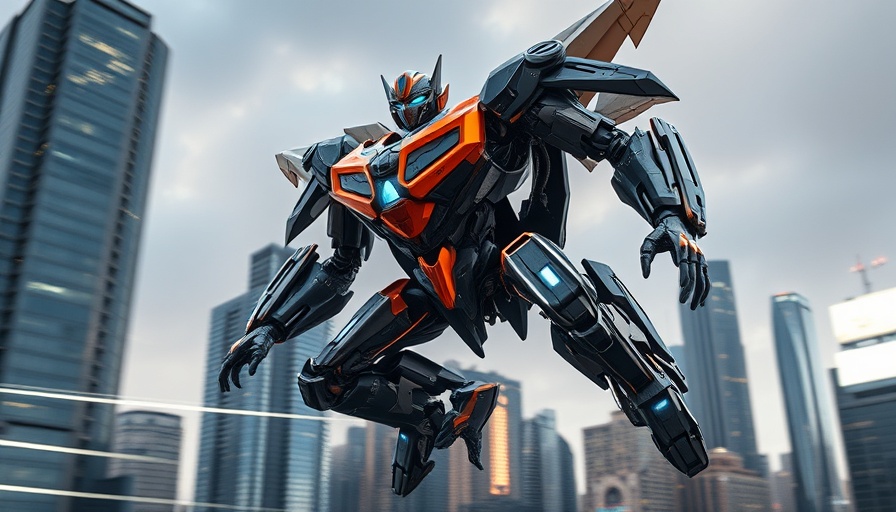
The Marvel of Mid-Air Transformation in Robotics
A groundbreaking innovation has emerged from the engineering labs at the California Institute of Technology: a flying and rolling robot that can transition in mid-air without a hitch. Named ATMO, this impressive robot utilizes its four thrusters to fly and can seamlessly switch to ground operations by transforming its structure mid-flight. This advancement promises to enhance the capabilities of robots in various fields, particularly in commercial delivery systems and exploratory missions where terrain can be unpredictable.
Bridging Nature and Technology
The ATMO robot is inspired by nature's own adaptive creatures, like birds, that can modify their body shapes for different forms of movement. Ioannis Mandralis, a graduate aerospace student and lead proponent of this project, highlights the potential improvements in autonomy and robustness that such transformations unlock. Where traditional multi-functional robots require landing before switching modes, ATMO's ability to adapt in-flight represents a significant leap in technology, leading us toward a future where robotics can navigate complex environments more effectively.
The Challenges of Mid-Air Transformation
This innovative functionality does not come without challenges. The scientists are tackling complicated aerodynamic forces that must be managed during the transition from flight to roll. Mory Gharib, a seasoned professor in aeronautics, points out the intricacies involved with close-ground operations, where flying vehicles experience unique dynamics that require meticulous engineering solutions. For instance, when helicopters prepare to land, they must manage the air dynamics created by their rotors interacting with the ground. Similarly, ATMO must navigate these phenomena during its mid-air transformation, positioning it amidst an ongoing struggle within the aerospace industry to refine such capabilities.
Looking Ahead: The Future of Robotics
As we embrace this tech evolution, the advancements represented by ATMO may lead to more sophisticated delivery drones, advanced exploration robots, and even personal transportation devices. The technology can pave the way for the next big tech trends, encouraging innovations that further blend artificial intelligence with robotics. Imagine a world where autonomous robots effortlessly traverse through cities and landscapes, continuously adapting to their environments in real-time. With developments like ATMO, this future becomes increasingly tangible.
Keeping abreast of innovations in robotic technology is more vital than ever. ATMO showcases just how close we are to realizing enhanced autonomous capabilities that could redefine our interaction with machines in everyday life. As we look forward to 2025 and beyond, staying informed about emerging tech trends will allow us to engage with and harness these revolutionary advancements effectively.
 Add Row
Add Row  Add
Add 




 Add Row
Add Row  Add
Add 



Write A Comment